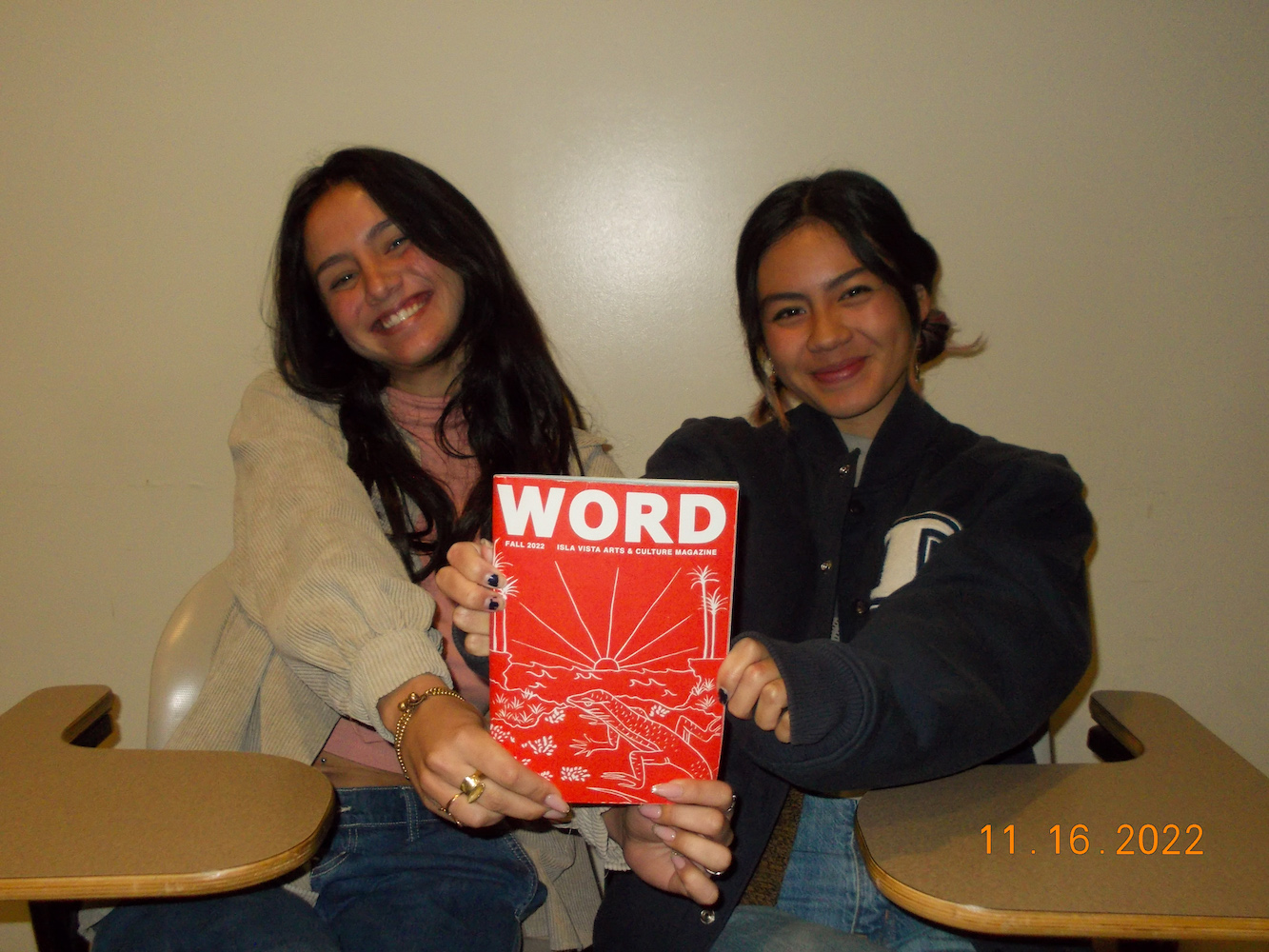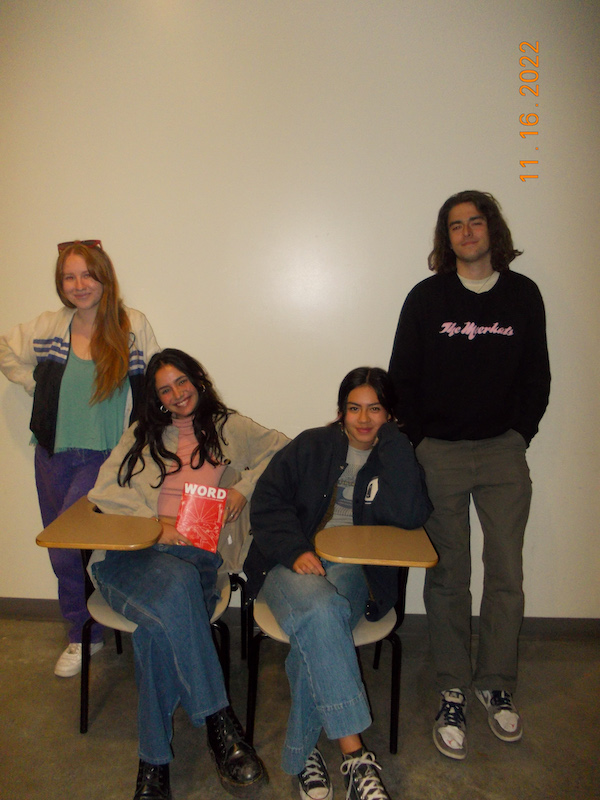WORD Magazine

This week I am joined by the co-editor of UCSB’s WORD Magazine, Makenna Gaeta. As a junior studying Communications and Journalism, Makenna reflects on her transition into a leadership role at WORD and what it means to be in creative control.
Q. What is WORD Magazine?
A. WORD is a completely student-run arts and culture publication. We cover UCSB campus life, but we also cover happenings in Isla Vista and the college town. We do all kinds of commentary and think pieces, but we also do some hard news.
Q. As one of the co-editors, how do you find and choose the stories that WORD covers?
A. We have a list of pitches at the beginning of the quarter. Every writer will pitch two stories, a soft pitch for a think piece and a hard pitch for a feature. As editors we then choose one of the two, depending on which one we like more and what we need to balance out the issue. A lot of the time we have certain stories we want in the publication, and if we aren’t sold on someone’s pitches we’ll assign them a story.
In terms of content, I personally try to make it a good balance between feature stuff – Munger Hall, cliff erosion, things that are really pressing in the community – and arts and culture. It is a quarterly publication, so we need to make sure what we cover is relevant when it comes out. For instance, if we do breaking stuff it has to be from a feature point of view where it’s topical in three months or so.
Q. What was it like transitioning from a writer to an editor?

A. I think the most awkward part about transitioning into a role where you have to hold other people accountable and be responsible for them is essentially that these were your peers a month ago. All of a sudden, you’re their boss.
When I first started as editor, I would get frustrated because I felt like no one was listening to deadlines. I felt as though they respected the old editor more and that I’m just this new person – I don’t know what I’m doing – but then I just started acting like I was the expert. I know what it’s like being a writer, and I can empathize with that.
I would say the biggest thing I’ve learned is to instill a level of mutual respect and compassion for one another. Really make it visible how passionate you are about what you’re doing and how seriously you take it. People really emulate that and respect that.
Q. What have you learned as an editor?
A. I have learned a lot about confidence in general. I didn’t realize how much public speaking you do, but often you’re basically leading an entire lesson. You have to be comfortable speaking to people all the time – intimately and in a group setting. But being an editor in general has honed a lot of self-confidence, knowing that I can create something amazing with the help of a lot of different people.
My whole life, I’ve hated group work – I think everyone does. I felt as though I’d do all the work, and I couldn’t rely on anyone else. But working at the magazine is all about relying on other people. If the art isn’t in, the writing can’t go on, and if the writing isn’t in, the art can’t go on. It’s about trusting people, which is what’s given me more confidence working in a team. I used to hate it. Now I feel like it’s one of the best parts of WORD.
Q. Based on your experience, how do you know a pitch is right for the publication?
A. I think the vibe for all WORD magazines is “go with the flow.” We have all kinds of surf and band pieces, different staples that people associate with Isla Vista. I feel in general like it’s more of a conversational magazine, you’re not going to be reading something super dense. It’s more about letting a bunch of different people use it as a creative outlet, then we all work together to make something cohesive that will honor people’s creativity.
A lot of the time we get art pitches that are really personal, like self-care graphics. You wonder: “Does this belong in the magazine?” And I say: If people can relate to it and if we can find a way to make it look professional, then put it in the magazine! A lot of it is just about being creative. We try to go in without a set theme or vision because I feel as though that emerges from the pitches we get and as the editors we mold it from there.
Q. What else do people need to know about WORD?
A. I think the biggest thing is that anyone can join. If you think that you can’t write or you think your art isn’t that good, if you spend a quarter really honing that skill and working on it with a bunch of different people who know what they’re doing, it is worthy of being in a publication. As long as there is space in the class, anyone can join regardless of skill.
Check out previous issues of WORD online at: https://ivarts.ihc.ucsb.edu/word-magazine





